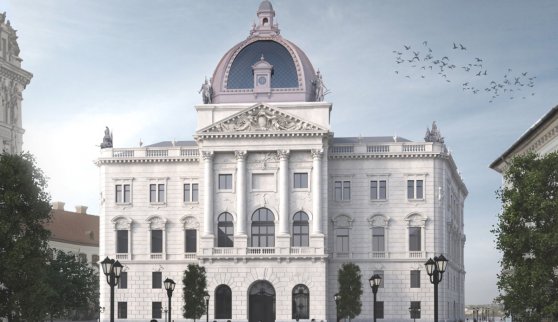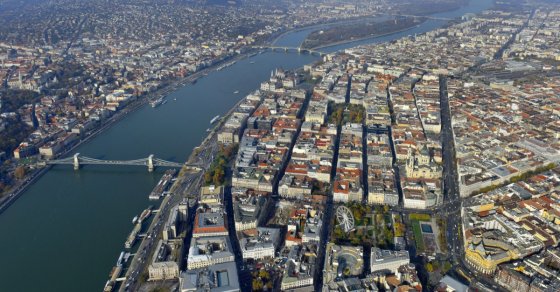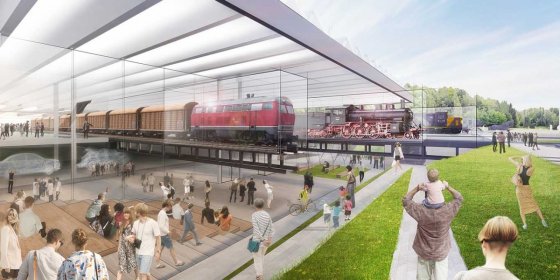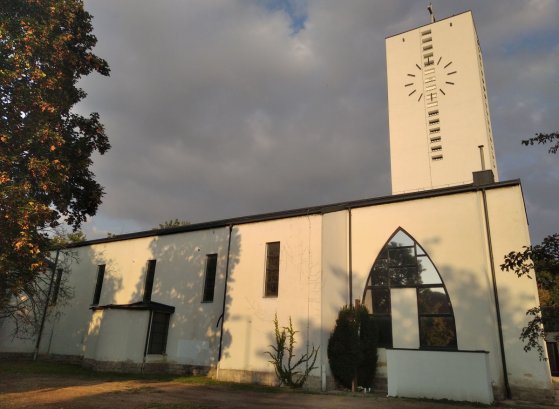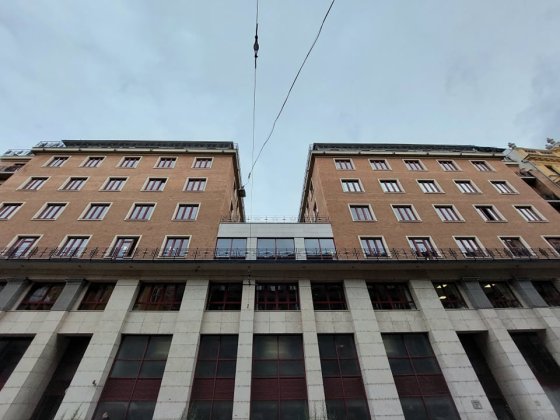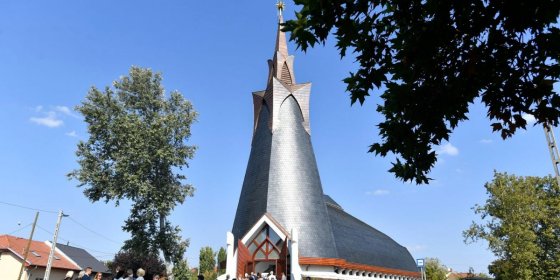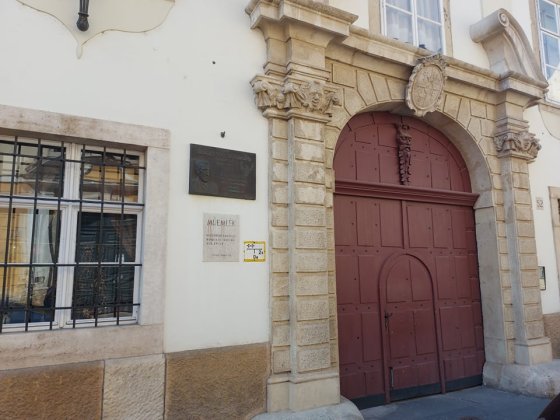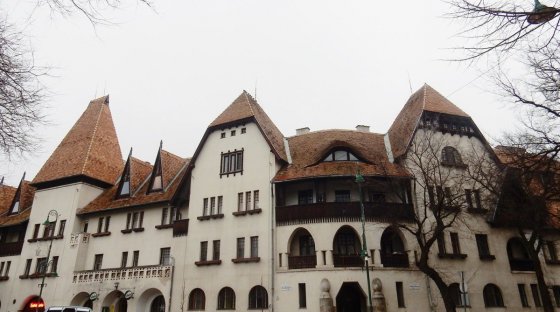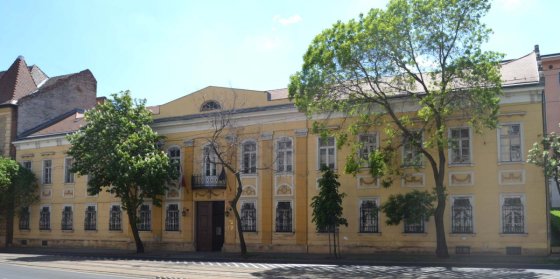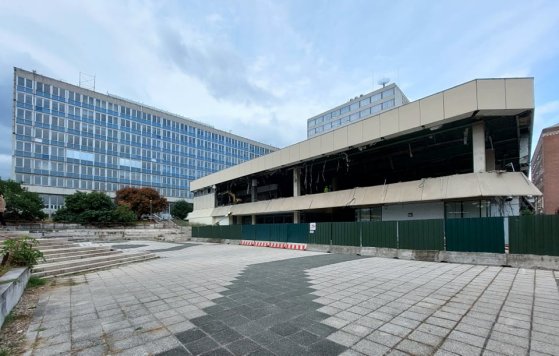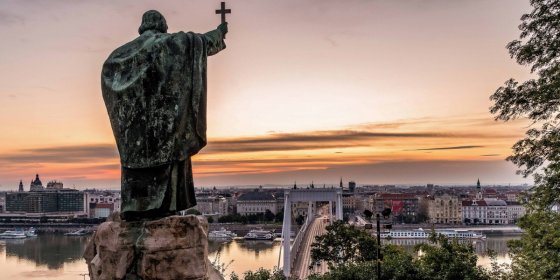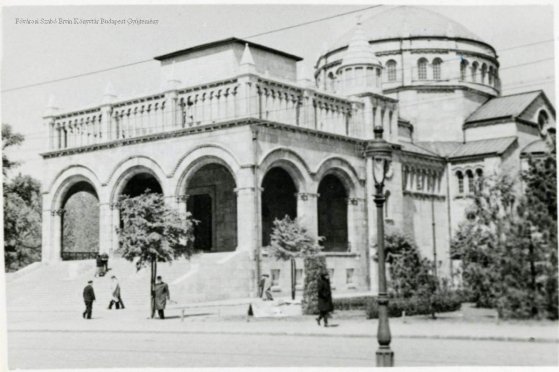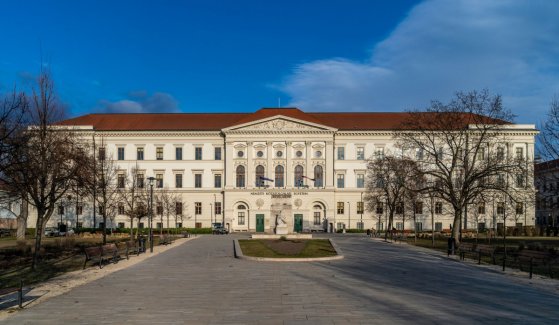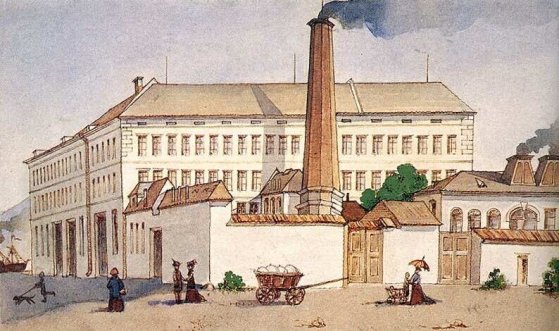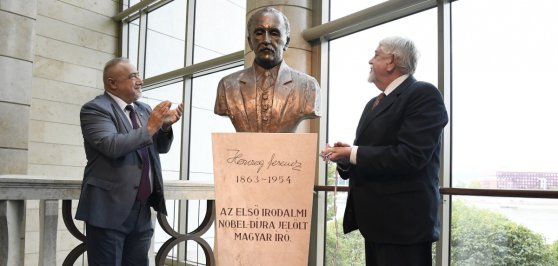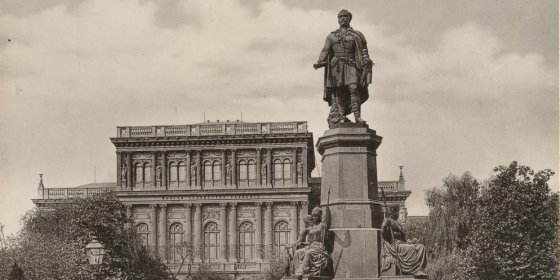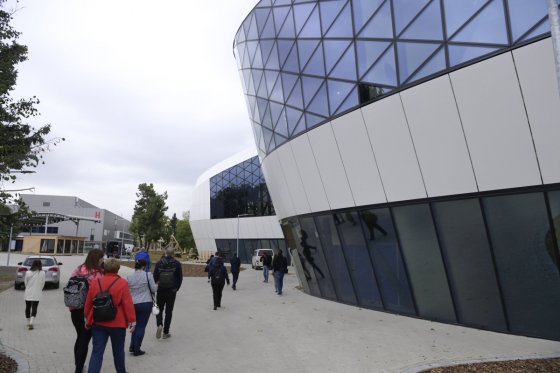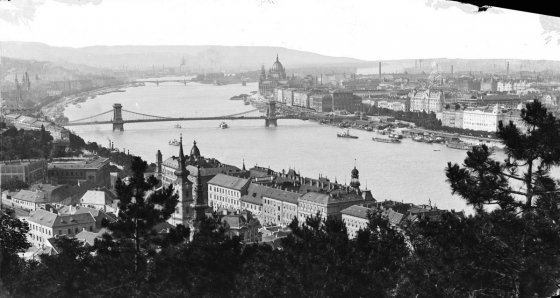 The „intertwined history” of the bridges and the city of Budapest
Which ideas and events have shaped the fate of bridges of Budapest and the cityscape? Alongside many other interesting facts, this question is also answered this newly published book by the Budapest City Archives, which introduces the history of bridges in Budapest.
The „intertwined history” of the bridges and the city of Budapest
Which ideas and events have shaped the fate of bridges of Budapest and the cityscape? Alongside many other interesting facts, this question is also answered this newly published book by the Budapest City Archives, which introduces the history of bridges in Budapest.
PestBuda
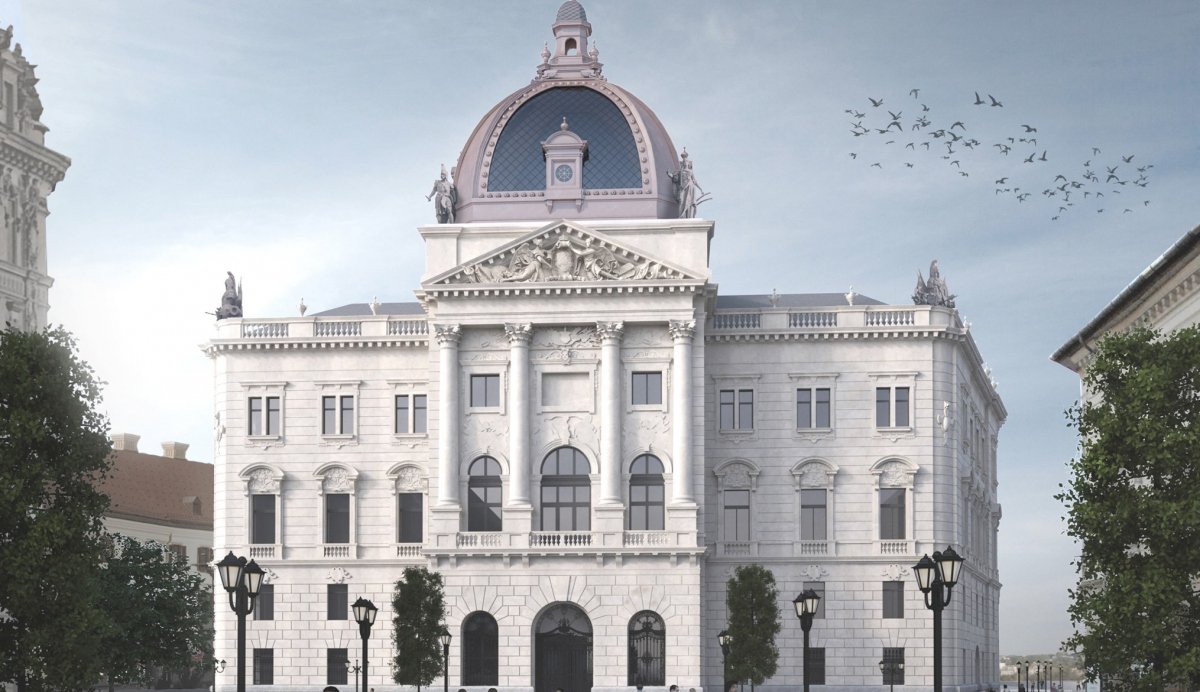 Elkezdődik a Honvéd Főparancsnokság épületének újjáépítése a budai Várban
Elkezdődik a Honvéd Főparancsnokság épületének újjáépítése a budai Várban
September 30, 2021 at 4:00 PM
A Dísz téren található, eredetileg Kallina Mór tervezte Honvéd Főparancsnokság torzója a rekonstrukció során visszakapja eredeti formáját, hasznos területe több mint a háromszorosára nő. A jövőben látogatóközpontként, a Budavári Palotanegyed kulturális és turisztikai kapujaként működik majd.
Reconstruction of the Honvéd High Command building in Buda Castle begins
September 30, 2021 at 4:00 PM
The torso of the Honvéd High Command, originally designed by Mór Kallina, located on Dísz Square, will regain its original form during the reconstruction, and its useful area will more than triple. In the future, it will function as a visitor center, the cultural and tourist gateway of the Buda Castle district.
Ingatlaneladásról, utcanevekről és hajléktalan-ellátásról is döntött a Fővárosi Közgyűlés
September 30, 2021 at 10:00 AM
Ötmilliárd forintért eladja a főváros a Bécsi út 357. szám alatti hatalmas telket, a XII. kerületben parkot neveznek el Polcz Alaine-ről, Kispesten pedig Pege Aladárról. Bővül a hajléktalan-ellátás is, új férőhelyeket alakítottak ki a Gyáli úti szálló épületében, amely nemrég került vissza a város kezelésébe.
The Budapest General Assembly decided on the sale of real estate, street names and homeless care
September 30, 2021 at 10:00 AM
For five billion forints, the capital is selling the huge plot at 357 Bécsi Road, in the 12th district a park is being named after Alaine Polcz, and in Kispest, another after Aladár Pege. Homeless care is also expanding, new places have been created in the building of the Gyáli Road hostel, which has recently been returned to the management of the city.
Felgyorsítják az új Közlekedési Múzeum beruházását – Jövőre kezdődhet az előkészítési munka
September 29, 2021 at 2:00 PM
Az Északi Járműjavító 2022-től hivatalosan is a Magyar Műszaki és Közlekedési Múzeum otthonává válik. Előrehozzák a szükséges bontásokat, a szennyezett talaj környezeti kármentesítését és néhány kisebb épület rekonstrukcióját. A Dízelcsarnok múzeummá történő átépítése 2023-ban kezdődhet meg.
The investment in the new Transport Museum will be accelerated - Preparatory work may begin next year
September 29, 2021 at 2:00 PM
From 2022, the Northern Vehicle Repair will officially become the home of the Hungarian Museum of Technology and Transport. They are bringing forward the necessary demolition, environmental remediation of contaminated soil and reconstruction of some smaller buildings. Reconstruction of the Diesel Hall into a museum could begin in 2023.
Modern, mégis magyaros – 80 éves az albertfalvi Szent Mihály-templom
September 29, 2021 at 10:00 AM
Szeptember 29-e Szent Mihály arkangyal ünnepe, a legnépszerűbb, leggyakrabban ábrázolt angyalé. Budapest több temploma is őt választotta patrónusául, melyek közül a legfiatalabb az 1941-ben felszentelt albertfalvi plébániatemplom. A modern, mégis magyaros épületet a közelmúltban új közösségi házzal is bővítették.
Modern, yet traditionally Hungarian - the Church of St. Michael in Albertfalva is 80 years old
September 29, 2021 at 10:00 AM
September 29 is the feast of St. Michael the Archangel, the most popular, most often depicted angel. He was elected patron of several churches in Budapest, the youngest of which was the parish church of Albertfalva, consecrated in 1941. The modern, yet traditionally Hungarian building has recently been expanded with a new community house.
A semmiből épített sajtóbirodalmat a Dohány utcában Tolnai Simon, a magyar sajtómágnás
September 28, 2021 at 9:30 AM
Ritkán szoktunk szerkesztőségünkről kulisszatitkokat elárulni, most kivételt teszünk: amikor Budapest múltjában kutakodunk, sokszor keresünk információkat vagy fotókat a Tolnai Világlapjában is. Az újság első száma 120 évvel ezelőtt, 1901. szeptember 28-án jelent meg. Alapítója, Tolnai Simon a semmiből építette ki hatalmas sajtóbirodalmát, amelynek központja előbb a Károly körúti, lebontott Orczy-házban, majd a Dohány utcában volt. Utóbbi épület ma is áll, irodaházként üzemel.
Simon Tolnai, the Hungarian press magnate built a press empire from scratch in Dohány Street
September 28, 2021 at 9:30 AM
Pestbuda rarely reveals behind-the-scenes secrets of their editorial staff, now they make an exception: when researching the past of Budapest, journalists often look for information or photos in the Tolnai Világlapja newspaper. The first issue of the newspaper was published 120 years ago, on 28 September 1901. Its founder, Simon Tolnai, built his huge press empire from scratch, centred first in the demolished Orczy House on Károly Boulevard and then in Dohány Street. The latter still stands today, operating as an office building.
Makovecz kezdte, tanítványa befejezte: Felavatták a pesterzsébeti templomot
September 27, 2021 at 4:00 PM
Felszentelték Pesterzsébet-Szabótelepen az Összetartozás református templomot, melynek alapkövét 2018. szeptember 23-án tették le, az építkezést 2019-ben kezdték el. A XX. kerületi épület az első budapesti templom, amely Makovecz Imre elképzelései alapján készült, a tervek részleteit a világhírű építész tanítványa, Dósa-Papp Tamás dolgozta ki. A templomhoz gyülekezeti ház és parókia is tartozik.
Makovecz started it, his pupil finished it: The church of Pesterzsébet was inaugurated
September 27, 2021 at 4:00 PM
The Reformed Church of Togetherness in Pesterzsébet-Szabótelep was consecrated, the foundation stone of which was laid on September 23, 2018, and construction began in 2019. A 20th district building is the first church in Budapest, which is based on the ideas of Imre Makovecz. the details of the plans were worked out by Tamás Dósa-Papp, the student of the world-famous architect. The church also has a congregation house and a parish.
A budai Várból telepítették ki az Afrika-kutató, vadászíró Széchenyi Zsigmondot
September 27, 2021 at 9:00 AM
Azt gondolhatnánk, hogy egy világutazó, Afrika-kutató élete irigylésre méltó. Széchenyi Zsigmondról azonban ez nem feltétlenül mondható el: a XX. század egyik legjelentősebb magyar utazóját és vadászíróját a kommunista rendszer meghurcolta és kitelepítette a budai Várból. Az Egy a természettel – Vadászati és természeti világkiállítás részeként az expedíciókon készített fényképeiből nyílik kiállítás a budapesti Capa Központban.
Africa researcher, hunter and writer Zsigmond Széchenyi was evicted from the Buda Castle
September 27, 2021 at 9:00 AM
One might think that the life of a world traveller and Africa researcher is enviable. However, this is not necessarily the case with Zsigmond Széchenyi: one of the most significant Hungarian travellers and hunters of the 20th century was dragged and evicted from the Buda Castle by the communist regime. As part of the ‘One with Nature’ World of Hunting and Nature Exhibition, an exhibition of his photographs taken during the expeditions will open at the Capa Centre in Budapest.
A kispesti Wekerletelep is őrzi a száz éve elhunyt miniszterelnök emlékét
September 26, 2021 at 9:30 AM
Kispesten található a különleges hangulatú Wekerletelep. Kisebb-nagyobb házai egységes stílusban, egy kívülálló számára kibogozhatatlan, de szabályos rendben kialakított utcákba rendezve alkotják ezt a mesébe illő városrészt. Létrehozását a száz éve elhunyt Wekerle Sándor, az egyik legkiemelkedőbb magyar miniszterelnök kezdeményezte.
Wekerletelep in Kispest also preserves the memory of the prime minister who passed away a hundred years ago
September 26, 2021 at 9:30 AM
Wekerletelep with its special atmosphere is located in Kispest. Its smaller and larger houses form this fairytale-looking part of the city in a uniform style, arranged in streets that are inexplicable for an outsider, but are in a regular order. Its creation was initiated by Sándor Wekerle, one of the most prominent Hungarian prime ministers, who passed away a hundred years ago.
Új tulajdonoshoz kerül a Színháztörténeti Múzeum és a Bajor Gizi Színészmúzeum
September 25, 2021 at 7:30 PM
Nemrégiben jelent meg a hír, hogy az Országos Színháztörténeti Múzeum és Intézet Krisztina körúti épületét, valamint a Stromfeld Aurél utcában lévő Bajor Gizi Színészmúzeumot is a Színház- és Filmművészetért Alapítványnak adja át az állam. Ennek kapcsán röviden bemutatjuk a két épület történetét.
The National Museum and Institute of Theater History and the Bajor Gizi Actors' Museum will be taken over by a new owner
September 25, 2021 at 7:30 PM
It has recently been reported that the building of the National Museum and Institute of Theater History on Krisztina boulevard and the Bajor Gizi Actors' Museum on Stromfeld Aurél Street will also be handed over by the state to the Foundation for Theater and Film Arts. In this regard, we briefly present the history of the two buildings.
Ötven évvel ezelőtt autópályahidat terveztek a belváros szélére
September 25, 2021 at 10:00 AM
A növekvő gépjárműforgalom már évtizedekkel ezelőtt is problémát jelentett a fővárosban. Még az is felmerült az 1970-es évek elején, hogy egy hatalmas autópályahidat építenek a Dunán, Lágymányos térségében. Ha az a tervezett híd megvalósult volna, ma egész más Budapesten élnénk.
Fifty years ago, a highway bridge was designed on the edge of the inner city
September 25, 2021 at 10:00 AM
Increasing car traffic has been a problem in the capital for decades. It even come up in the early 1970s that a a huge highway bridge should be built on the Danube in the Lágymányos area. If that planned bridge had been realized, we would be living in a different Budapest today.
Már építik a József Főhercegi Palota alapját a budai Várban
September 24, 2021 at 4:00 PM
Megkezdődtek József főherceg egykori palotájának az alapozási munkálatai a budai Várban, a Szent György téren. Az épületet a Nemzeti Hauszmann Program keretében, az eredeti tervek szerint építik újjá.
The foundation of the Archduke's Palace in Buda Castle is already under construction
September 24, 2021 at 4:00 PM
Work on the foundations of the former palace of Archduke Joseph began in Buda Castle, Szent György Square. The building will be rebuilt according to the original plans under the National Hauszmann Program.
Első lépés a BME Innovációs és Fejlesztési Központ építéséhez – Bontják a Goldmann téri menzát
September 24, 2021 at 2:00 PM
Megkezdődött a Petőfi híd budai hídfője melletti Goldmann György téren álló Goldmann Menza épületének a bontása. Az egykori egyetemi étterem és a mellette álló BME V2 nevű, korábban a műszaki egyetem villamosmérnöki karának otthont adó épület helyére a BME Innovációs és Fejlesztési Központ épül majd.
The first step in the construction of the BME Innovation and Development Center - The canteen of Goldmann Square will be demolished
September 24, 2021 at 2:00 PM
The demolition of the Goldmann Canteen building on Goldmann György Square near the Buda end of the Petőfi Bridge has begun. The former university restaurant and the adjoining building called BME V2, formerly home to the Faculty of Electrical Engineering of the Technical University, will be replaced by the BME Innovation and Development Center.
Akiről a Gellért-hegyet elnevezték: 975 éve halt mártírhalált Imre herceg tanítója
September 24, 2021 at 9:03 AM
Szent Gellért nevét, legendáját nemcsak a magyarok ismerik, de minden bizonnyal az ide látogató turisták is hallanak róla. Ha másért nem, azért, mert a keresztény Magyarország első vértanújának Gellért-hegyi szobra a budapesti városkép szerves része. A püspök több mint száztíz éve tartja magasba a keresztet a főváros felett. A 975 éve mártírhalált halt Gellért püspök emlékét nem pusztán a hegy, de számos más alkotás is őrzi a fővárosban.
From whom Gellért Hill was named: the educator of prince Emeric died a martyr's death 975 years ago
September 24, 2021 at 9:03 AM
The name and legend of Saint Gellért is known not only to the Hungarians, but certainly to the tourists visiting here. If for no other reason, because the Gellért Hill statue of the first martyr of Christian Hungary is an integral part of the Budapest cityscape; the bishop has been holding the cross high above the capital for more than a hundred and ten years. The memory of Bishop Gellért, who died a martyr's death in 975 years, is preserved not only on the mountain, but also in many other works in the capital.
Hetven éve robbantották fel a Regnum Marianum-templomot
September 23, 2021 at 3:00 PM
Csupán húsz évig állt a Városliget szélén a Regnum Marianum-templom. Az 1931-ben felszentelt templomot 1951. szeptember 23-án robbantották fel. A kommunista diktatúra vezetői városrendezési okokra hivatkoztak, valójában azonban azt a templomot akarták lerombolni, amely „hálából” épült, hogy a Tanácsköztársaság önkényétől Magyarország megszabadult.
The Regnum Marianum church was blown up seventy years ago
September 23, 2021 at 3:00 PM
The Regnum Marianum church stood on the edge of Városliget for only twenty years. The church, consecrated in 1931, was blown up on September 23, 1951. The leaders of the communist dictatorship invoked town planning reasons, but in reality they wanted to demolish the church, which was built out of “gratitude” for Hungary gettingt rid of the arbitrariness of the Soviet Republic.
Száz éve indult újra a budapesti autóbusz-közlekedés
September 23, 2021 at 10:00 AM
Budapesten az I. világháború után csak 1921-ben indult el ismét az autóbusz-közlekedés. Száz évvel ezelőtt az elektromos járművek először az Aréna, azaz a mai Dózsa György út és az Apponyi tér, a mai Ferenciek tere között szállították az utasokat. Bár sokan luxusnak tartottak a száguldozó járműveket, de végül az autóbusz-közlekedés létjogosultságot nyert a fővárosban.
A hundred years ago, bus traffic in Budapest resumed
September 23, 2021 at 10:00 AM
In Budapest, after the First World War, bus traffic did not start again until 1921. One hundred years ago, electric vehicles first transported passangers between the Aréna, i.e. today’s Dózsa György Road and Apponyi Square, today's Ferenciek Square. Although many considered the racing vehicles to be a luxury, in the end bus transport gained a raison d’être in the capital.
Folytatódik a Ludovika felújítása – Megvannak a tervezők
September 22, 2021 at 2:30 PM
A közeljövőben újabb két épületrész felújítása kezdődhet meg a Nemzeti Közszolgálati Egyetem Ludovika Campusán. A most zárult közbeszerzési eljárás alapján megkezdődik a Diószegi utcai részlegen található úgynevezett Tóparti épület átalakításának tervezése valamint az Üllői úti Ludovika Vívóterem és rendezvényközpont felújításának tervezése.
Renovation of Ludovika continues - We have the designers
September 22, 2021 at 2:30 PM
Renovation of two more parts of the building may begin in the near future on the Ludovika Campus of the University of Public Service. Based on the recently completed public procurement procedure, the planning of the reconstruction of the so-called Tóparti building in the Diószegi Street section and the planning of the renovation of the Ludovika Fencing Hall and Event Center on Üllői Street will begin.
Az első pesti gőzmalom jelentős ipari fejlődést indított el – 180 éve kezdte meg működését a József Hengermalom
September 22, 2021 at 9:00 AM
Ma már nehéz elképzelni, de egykor a Lipótvárosban, a mai Balassi Bálint – Stollár Béla – Falk Miksa és Balaton utca által határolt területen épült fel és működött Pest első gőzmalma, amely 1841. szeptember 22-én kezdte meg a működését. A József Hengermalom azonban több volt, mint egy egyszerű malom. A Széchenyi István kezdeményezésére létrejött modern üzem pénzügyileg nem volt sikeres, de hatására a malomipar és a gépipar is jelentős fejlődésnek indult. Pest a XIX. század második felében malomipari nagyhatalom lett.
The first steam mill in Pest started significant industrial development - the József Rolling Mill started operating 180 years ago
September 22, 2021 at 9:00 AM
Today it is difficult to imagine, but once the first steam mill in Pest was built and operated in Lipótváros, in the area bordered by today's Bálint Balassi - Béla Stollár - Falk Miksa and Balaton Streets, which started operating on 22 September 1841. However, the József Hengermalom [Rolling Mill] was more than a simple mill. The modern plant established on the initiative of István Széchenyi was not financially successful, but as a result the milling industry and the machine industry also started to develop significantly. Pest in the second half of the 19th century became a major power of the milling industry.
Felavatták Herczeg Ferenc író szobrát
September 21, 2021 at 6:00 PM
A Nemzeti Színház épületében állítottak mellszobrot Herczeg Ferencnek, a két világháború közötti korszak legnépszerűbb írójának, aki az első irodalmi Nobel-díjra jelölt magyar író volt. A második világháborút követően száműzték a magyar irodalomból, műveit csak a rendszerváltozás után adták ki újra. Törley Mária szobrászművész alkotása immár méltó emléket állít Herczeg Ferencnek.
The statue of the writer Ferenc Herczeg was inaugurated
September 21, 2021 at 6:00 PM
A bust of Ferenc Herczeg, the most popular writer of the period between the two world wars, who was the first Hungarian writer to be nominated for the Nobel Prize for Literature, was erected in the building of the National Theater. He was exiled from Hungarian literature after the Second World War, and his works were republished only after the change of regime. The work of sculptor Mária Törley now commemorates Ferenc Herczeg.
Egy életút pest-budai állomásai – A 230 éve született Széchenyi István emlékezete a róla elnevezett téren
September 21, 2021 at 9:00 AM
A 2021-es esztendő Széchenyi-évnek is nevezhető, hiszen idén szeptember 21-én ünnepeljük a gróf születésének 230. évfordulóját. Emellett van Pesten egy olyan tér is, amely éppen 10 éve viseli a legnagyobb magyar nevét, s jórészt minden szeglete a gróf életének egy-egy szakaszához vagy hazafias tetteihez kapcsolódik. A Lánchíd pesti hídfőjénél található térről van szó, amelyet maga Széchenyi István még Kirakodó térnek ismerhetett.
Stations of a Life - The memory of István Széchenyi, born 230 years ago, in the square named after him
September 21, 2021 at 9:00 AM
The year 2021 can also be called the Széchenyi Year, as Hungarians celebrate the 230th anniversary of the count's birth on 21 September. In addition, there is a square in Pest that had been named after the biggest Hungarian for 10 years, and most of its corners are related to a certain stage of the count's life or patriotic deeds. It is the square at the Pest end of the Chain Bridge, which István Széchenyi may have known as Kirakodó Square.
Az új Hungexpo beszippant – Modern konferencia-központ épült
September 20, 2021 at 7:30 PM
Közép-Európa egyik legnagyobb és legmodernebb kongresszusi és konferencia-központja jött létre Budapesten, a Hungexpo területén. A meglévő épületeket felújították, és teljesen újakat is építettek, amelyek nemcsak felszereltségükkel, de megjelenésükkel is lenyűgözik a látogatót.
The new Hungexpo lures everyone in
September 20, 2021 at 7:30 PM
One of the largest and most modern congress and conference centres in Central Europe has been established in Budapest, on the territory of Hungexpo. The existing buildings have been renovated and completely new ones have been built, which impress the visitors not only with their equipment but also with their appearance.
More articles
 The „intertwined history” of the bridges and the city of Budapest
Which ideas and events have shaped the fate of bridges of Budapest and the cityscape? Alongside many other interesting facts, this question is also answered this newly published book by the Budapest City Archives, which introduces the history of bridges in Budapest.
The „intertwined history” of the bridges and the city of Budapest
Which ideas and events have shaped the fate of bridges of Budapest and the cityscape? Alongside many other interesting facts, this question is also answered this newly published book by the Budapest City Archives, which introduces the history of bridges in Budapest.
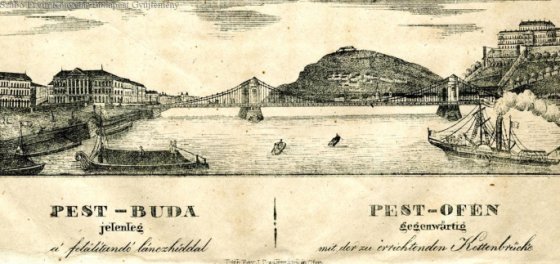 The Bridge Report, which brought a turning point in the history of Budapest
A travel report that changed the history of Pest and Buda, as well as Hungary. The little book contributed to the change of half a thousand years of legal customs and the implementation of an investment of unprecedented size and technical quality. This book was The Bridge Report [Hídjelentés in Hungarian].
The Bridge Report, which brought a turning point in the history of Budapest
A travel report that changed the history of Pest and Buda, as well as Hungary. The little book contributed to the change of half a thousand years of legal customs and the implementation of an investment of unprecedented size and technical quality. This book was The Bridge Report [Hídjelentés in Hungarian].
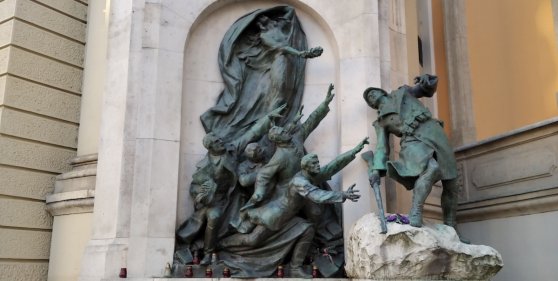 Drama on the university wall - The heroic monument was planned 95 years ago
In the constant hustle and bustle of the Egyetem Square in Pest, the students may not even notice the monument that decorates the short section of wall between the church and the central building of ELTE. However, it commemorates their predecessors, the heroes who fought for their country in World War I, and those who heroically helped them. The first design of the dramatically collapsing soldier was born in 1928, ninety-five years ago.
Drama on the university wall - The heroic monument was planned 95 years ago
In the constant hustle and bustle of the Egyetem Square in Pest, the students may not even notice the monument that decorates the short section of wall between the church and the central building of ELTE. However, it commemorates their predecessors, the heroes who fought for their country in World War I, and those who heroically helped them. The first design of the dramatically collapsing soldier was born in 1928, ninety-five years ago.

